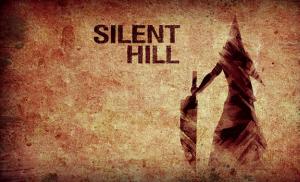The type of snake venom is the most dangerous. The most venomous snakes
For most people, snakes cause almost sacred horror. And there is a reason - some representatives are very poisonous. A bite can cause human death... Therefore, just in case, people are afraid of all snakes. We will tell below about the most dangerous types of them.
Taipan. Oxyuranus scutellatus lives in northeastern Australia. These snakes reach a length of 3.5 meters. Taipans have a very strong poison - one bite contains enough of it that is enough to kill 100 people or 250 thousand mice. In one bite, a maximum of 100 mg of poison can be released. Taipan studies are steeped in tragic stories. For a long time people could not catch this snake at all, scientists in their research relied only on the legends of local aborigines. In 1867, a single copy of the taipan was found, according to which it was described. For 56 years no new information the snake has not been reported. But people badly needed an antidote - more than 80 people died from taipan bites in Australia every year. On June 28, 1950, an important historical expedition began. A young scientist, Kevin Baden, set out from Sydney to capture the taipan. He managed to find a mysterious snake, but when he took it in his arms, she bit him on the finger. Baden was unable to escape, but managed to deliver the snake to scientists for further study.
Mulga. The species Pseudechis australis has received the nickname "The Brown King". This snake also lives in Australia, growing up to 2.5-3 meters. Mulga is a very dangerous snake, as it produces a lot of poison. An average snake can excrete up to 150 mg of it at a time. Mulgu can be found almost anywhere in Australia. The snake is especially often found in the north and west of the mainland. Mulga does not live only in the states of Tasmania and Victoria. The snake has chosen for itself forests, meadows, deserts, pastures, abandoned burrows and deep cracks... But rainforests Mulga doesn't like it. The main food of the snake is other reptiles, including Poisonous snakes, frogs, lizards. Mulga can attack birds and even mammals. The snake's body is very well adapted to digest other dangerous creatures, as a result of which their poison is harmless to mulgi.
Krayt. This species, called Bungarus candidus, is common in South Asia, Australia and the islands of the Malay Archipelago. The snake reaches a length of 1.5-2 meters, and a portion of its poison is enough to kill 10 people. Krayt prefers to spend time in dry places, in which there are many hiding places for her - burrows, bushes, dead wood. Often the snake penetrates man-made lands, houses and yards. This is what caused the frequent contacts and attacks on people. Snakes not only cross the path of travelers, but also penetrate locked dwellings and rooms, slipping into bathrooms and bedrooms, entering closets. The most common is tape krait, or pama. It lives in southern China, India and Burma. The entire one and a half meter body of the snake is covered with alternating yellow and black rings. The poison of krait is so strong that even the viper, considered the most susceptible to many types of poison, can die from it. During the day, a meeting with a krait is almost safe, he is unlikely to attack. At this time, the snake is rather lethargic, it hides from the sun, moving slowly. Even if you disturb her, the krait will not rush at the offender, but will prefer to crawl to the side and curl up into a ring. The diurnal lifestyle and the large number of the species contribute to frequent meetings with humans. But at night, the krait are completely different, they are extremely unfriendly. Snakes can attack even if they are not in danger. The poison of the kraits is so strong that the bitten chicken dies in 15 minutes. The scientist Roussel studied the effects of the venom of this snake. It turned out that 10 minutes after the bite, the dog began to twitch the wounded limb, lift it up. However, the dog could still stand. After another 5 minutes the dog lay down and began to bark. Less than half an hour after being bitten, both hind legs were already paralyzed. During the second hour, the paralysis only worsened, and breathing became heavy. By the end of the second hour, the dog was dying.
Tiger snake. Notechis scutatus is found in Australia, except for its northernmost regions, Tasmania and some islands south coast country. The snake reaches 1.5-2 meters in length. She is famous for the fact that among all the snakes living on the planet, it is she who has the most powerful poison. Small animals die from bites very quickly, literally in a matter of seconds. The glands of the tiger snake contain enough poison to kill 400 people. It acts on the victim's nervous system, resulting in paralysis. The poison quickly reaches the nerve centers that control breathing and heartbeat. As a result, it stops, and the victim cannot even breathe. When a tiger snake is agitated, it lifts the front of its torso high, making its head and neck flat. Meeting the tiger snake is a dangerous adventure. True, the locals are trying to calm down the frightened tourists. Indeed, despite all the danger of a tiger snake bite, she is also the most cowardly. She herself does not crawl in the house on purpose, does not rush at people, avoiding them. The snake will attack only as a last resort and then, for the purpose of protection. It is a reptile ovoviviparous. The offspring are quite abundant, up to 72 snakes can be born at once. There is a known case when 109 embryos were found in one dead female during autopsy.
Indian cobra. Naja naja lives not only in India, but also in Burma, Afghanistan, southern China. You can meet this species in the south of Turkmenistan, right up to the Caspian Sea. The snake can reach a length of 1.4-1.81 meters. The legend about this cobra says that the Buddha once wandered the earth. And then one day he fell asleep under the rays of the midday sun. Then a cobra appeared before him, which opened its shield and covered the face of the god from the heat. The Buddha, in gratitude for this, promised his mercy to the snake, but soon forgot about his word. Cobra soon reminded him of the promise, as the vultures began to attack her relatives. To enable the snake to protect itself, the Buddha gave her glasses, which became protection from birds of prey... In nature, the cobra prefers to bask in the sun before entering its home. As soon as a person appears nearby, the snake quickly hides. She will attack extremely rarely, only as a last resort defending herself from the attacker. Cobra venom is neurotoxic. Complete paralysis from it comes in just a minute. The power of the poison is such that the laboratory mouse dies from it in 2 minutes, and the chicken - in 4. True, the cobra tries not to bite a man unnecessarily. Often the snake even makes only a false throw towards the enemy, without opening its mouth, but only frightening. However, you should not anger the cobra. If it is nearby, you cannot hit it with a stick or throw something at it. After all, this can anger a cobra, it can attack in self-defense.
Sandy Efa. The Echis carinatus species usually does not exceed 70-80 centimeters in length. Efu can be found in valleys and foothills Central Asia, in the north of Africa. The bite of an ephae becomes fatal for a person. Even if he survives, he will remain disabled forever. In Africa, more people die from the poison of this snake than from all other poisonous snakes combined. The favorite habitat of the ephae is the hilly sands overgrown with saxaul. She also loves clay deserts, thickets of bushes, ruins and river cliffs. When conditions are favorable, Efa can be quite plentiful. So in the valley of the Murghab River on an area of only 1.5 square kilometers. snake catchers managed to get more than 2 thousand of these snakes in 5 years of hunting. Efa is a very interesting snake. She differs in many ways from her cold-blooded counterparts. If the winter is not cold, then the efa may not hibernate. These snakes can even mate in January. Little snakes appear by March. In most snakes, offspring usually does not come into the world until summer. Efa also lays eggs, giving birth to small snakes live. One female is capable of giving birth to 3-16 young heirs, which usually reach 10-16 centimeters in length. Although the efa is one of the most venomous snakes, the objects of its hunt are small. The main prey of the snake does not exceed the size of the mouse - grasshoppers, spiders, centipedes. This is probably due to the fact that the Efa is quite mobile and does not know how, like its other relatives, to just lie in the sun. But it is precisely peace that is needed to digest large prey. Efa usually moves sideways. In this case, the head is thrown to the side, then the back of the body is brought forward, and the front is pulled up. This method of movement is very effective when moving on a loose surface. At the same time, a characteristic trace remains on the sand - oblique stripes with curved ends. Rarely, but efa still crawls into human dwellings. Last time such cases were recorded in Egypt. So you need to be careful when visiting abandoned houses or ruins in those parts. In 1987, three children found an ephae's nest in an old empty house. All curious kids died from snake bites, disturbing the hiding family. The snake had just given birth and began to protect its offspring. It was not possible to save the children, as the poison acted very quickly. Usually, with a bite, the first aid measure is to suck out the poison from the wounds. So you can remove a significant part of the toxic substance from the body. Squeezing out the poison with your fingers and sucking it out can be done within the first 7-10 minutes after the bite. Such a measure is absolutely safe for people doing it. But there is no point in applying a tourniquet, because it does not in any way interfere with the absorption of the poison.
Aspid. The Micrurus species is 0.6-2.5 meters long. It lives in Australia, North Africa, Argentina, Brazil and the West Indies. Aspid became famous for its extremely aggressive nature. The snake's venom acts with lightning speed, leading to the death of a person in just 7 minutes. The most common types of snakes are common, coral and Egyptian. The latter is the most poisonous of its kind. The death of a person from a bite occurs within 5 minutes. Average length such a snake is 2 meters. The color of the Egyptian snake resembles a spectacled snake. It is curious that scientists assume the ability of a snake not only to bite venomously, but also to spit out poisonous saliva at a distance of up to one and a half meters. The common snake lives in Australia and New Guinea. It is smaller in length - up to one and a half meters. And his disposition is unfriendly. The snake attacks everyone who gets in its way, be it a person or an animal. From the bite of an ordinary asp, they also die quickly, moreover, in terrible agony. If the adder is going to attack, then the chances of escape are quite small. The traveler Anderson said that he once collected herbs. Suddenly the snake, unnoticed by him, was about to pounce on the man and bite his hand. Without thinking twice, Anderson rushed to run away. The snake did not even think to lag behind, practically overtaking the person. He was saved by a ditch where the fugitive stumbled and fell. The snake, in its rage, did not notice the disappearance of the pursued one, slipping past. Scientists have a vaccine against snakes. But there is little sense in it, because the poison acts very quickly. In those 7 minutes that are allotted to a person, it is simply impossible to inject him with an antidote. Statistics states that out of 10 bitten, eight cannot be saved.
African boomslang. In the south and southwest of Africa, the species Dispholidus typus is found. Its length is 0.5-3 meters. Boomslang venom is twice as dangerous as that of a viper or Indian cobra. The front teeth on the upper jaw of the snake have a groove. Poison flows there during the bite. He himself is highly toxic. When it enters the bloodstream, the poison immediately begins to destroy cells. In experiments, after being bitten by a boomslang, ducks died within 15 minutes, and paralysis occurred within a minute. In 1957, there was a famous tragic incident. Then the famous American zoologist and reptile specialist Karl Paterson Schmidt died from a boomslang bite. He tried to grab the snake in order to study it further. However, the boomslang was able to dodge the man's hands and bite him. While dying, the scientist continued to observe, describing his condition. Over the past 5 years, boomslangs have killed 23 people. For comparison - vipers were killed twice in the same period, and cobras - three times. more people... With boomslang, as with any other snake, you should be as careful as possible. You should not come close to her, anger her and make sudden movements. The snake becomes aggressive and attacks only through the fault of the person himself. Usually, the snake, seeing people, prefers to hide itself. The rules for communicating with her are simple - do not touch her, and she herself will not touch you.
Green mamba. In South Africa, there is a species of snake Dendroaspis angusticeps, reaching a length of one and a half meters. The poison of mamba is very toxic, surpassing in its strength even the poison of some cobras. This snake can attack unexpectedly, for no apparent reason and without warning. In this case, it becomes very difficult to escape from the mamba. In addition, the poison acts so quickly that doctors, even being on the spot, do not have time to administer the antidote. There can be no question of being transported to the hospital to administer the medicine. The green mamba is very beautiful. The scales on her body shimmer with an emerald greenish color, in it there are shades of yellow and blue. Mambas love to jump from tree branches by the collar of their clothes. Getting it out quickly is pretty hard. While a person is busy, the snake manages to inflict its poisonous bite. It is rather difficult to spot a green mamba in the thick of leaves. Therefore, being in the habitat of such a snake, one must observe not only the living creatures teeming in the grass, but also look at the trees. If a green mamba is seen among the leaves, then it is better not to risk it, but to bypass this place.
Gyurza. The Vipera lebetina species lives in northern Africa, Turkey, Iraq, Iran, Afghanistan, Pakistan, Northwest India. This snake is also found here in Dagestan. Gyurza reaches a length of one and a half meters. The snake is deadly. Even if the antidote is invented, it is often simply not possible to administer it to the victim. According to statistics, one in five of those bitten dies. When the poison enters the bloodstream, it begins to destroy red blood cells, causing blood to clot. As a result, numerous internal hemorrhages, blockages of blood vessels are formed, and edema appears in the area of the bite. All this is accompanied by sharp pain, the person begins to feel dizzy, vomiting appears. The bitten one needs emergency help, otherwise he will die in 2-3 hours. The number of gyurza is quite large. Up to 5 snakes can be located on one hectare. At the same time, gyurza often gather in collectives. There were cases when 20 of these snakes were found at once under a small stone. Gyurza is by nature rather slow, preferring to lie under a stone or in the sun. However, this behavior is characteristic of her, if nothing threatens the snake. And the gyurza does not pursue prey, but prefers to wait in one place. But the sluggishness and sluggishness of the snake is only an appearance. In case of danger, the gyurza begins to move quickly, including through trees. Usually the snake tries to hide in the nearest shelter as soon as possible. It is not necessary for her to block the road at such a moment. Gyurza begins to hiss menacingly, after which she can make a sharp throw with her whole body towards the enemy.
Today we will talk about the most dangerous snakes in the world.
Snakes are one of the most mysterious and difficult earthly creatures, someone considers them insanely beautiful and dangerous, someone is disgusting, terrible, disgusting useless animals. The snake, according to biblical legends, before the fall of man, was the wisest animal, after which it began to crawl on its belly, there is dust. Snakes perform mainly sanitary functions, eating rodents, but many of them are poisonous to humans.
“There are over 2,500 species of snakes on our planet. They can be found everywhere except Antarctica and several islands such as New Zealand and Ireland, and they are also absent on the small islands of the Atlantic and Pacific (central part of it) oceans. However, among all the snake variety, only 10% are poisonous. "
Of the more than 2,500 snake species, 410 are venomous.“They differ from each other not only in structure and way of life, but also chemical composition poison, its effect on a living organism. Official statistics say that every year from snake bites up to 50,000 people die. "
The most actively inhabited by dangerous snakes are countries, regions, continents where tropics, heat, mountains, and jungles abound. For example, in the vicinity of Brazil there is an island called "Serpentine".
"Snake Island (located off the coast of Brazil)
The most dangerous poisonous snakes of the continent are found here. For example, spearheads - one snake bite of this species leads to instant tissue death and death.
According to statistics, the number of venomous snakes ranges from 1 to 5 individuals per square meter of the Serpentine Island area. Therefore, visiting the island is officially prohibited. But all the same, there are extreme sportsmen every year ... ”.
There are only a few species of poisonous snakes in Russia, mainly in the North Caucasus. In the rest of Russia, you can find vipers and shitomordnikov. Their bites are usually non-fatal, but there are rare fatalities. In general, death from a viper bite happens about as often as from a hornet bite, and mostly not from poison, but from anaphylactic shock.
In the North Caucasus, you can find such poisonous snakes as the snake snake (three species), the viper (six species), the gyurza, and the tiger snake.

In the photo Shytormordnik

In the photo Viper

In the photo Gyurza
“Gyurza is a representative of the genus of giant vipers and can reach a length of two meters, she is the largest representative of the genus of vipers. For humans, such a snake is the most dangerous.
In terms of its toxicity, the venom of gyurza is perhaps inferior only to the venom of a cobra, while during protection, the snake is able to make a long jump own body towards the enemy.
The bite of such a snake is accompanied by severe pain, vomiting and dizziness, in just one such bite there is up to 50 milligrams of poison. If help is not provided on time, then after two or three hours the person will die. "
In addition to the defeat of the victim with poison, snakes are able to kill and harm the victim in other ways.
For example, in tropical rivers South America, Brazil meets the anaconda, we saw it in horror films and in videos with wildlife, where a snake swallows animals alive by a crocodile.
This is the most large snake of the well-known modern snakes, even the weight of females can reach 100 kg, the length is 5-6 meters.


In the photo anaconda
Contrary to the horrors described and shown - anaconda rarely encroaches on a person, however, cases of attacks and murders of people are still recorded.
Boas, for example, squeeze the victim, tying it with rings and pinching chest or throat.
There are a lot of snakes that infect the victim directly with poison, let's consider the most dangerous of them.
The first places are shared by the cruel snake, taipan, tiger snake, sand efa.
I'll tell you right away about the most beautiful of them:
“Spectacled snake, or Indian cobra (lat. Naja naja) is a very beautiful motley snake that grows up to 1.5-2 meters in length. Lives in India, Central Asia, South China(to the Philippines and the islands of the Malay Archipelago).

In the photo, a spectacle snake
The offspring of this cobra is poisonous from the very first minutes after birth. I spectacled cobra contains toxins that damage the central nervous system. One gram of poison alone can kill 140 medium-sized dogs. "

In the photo Malay krait
“The Malay krait (Bungarus candidus) is a very dangerous snake from the asp family. Differs in extreme unfriendliness. Lives in Australia, South Asia and the islands of the Malay Archipelago.
Its poison is fatal and primarily affects the human brain. Death can occur quickly and even without paralytic symptoms. "
I must say, the asps are generally all beautiful, from the outside ... Asps are an extensive family of poisonous snakes, which included 347 species, united in 61 genera, including mambas and cobras.
“In general, the venom of snakes is dominated by neurotoxins, which gives a characteristic clinical picture when bitten. Local phenomena in the area of the bite almost do not develop (there is neither swelling nor redness), but death quickly occurs due to oppression nervous system, primarily paralysis of the respiratory center. The bite of large snakes, such as a cobra, represents mortal danger for a person ".


In the photo there is a harlequin snake
“The harlequin or eastern snake (Latin Micrurus fulvius) is a venomous snake that lives in northeastern Mexico and the southeastern United States. It has a bright color with characteristic red, black and narrow yellow rings.
The bite of this snake is very dangerous for human life... If help is not provided on time, then a person can die in 20-24 hours. "
The most poisonous land snake, the cruel snake, also belongs to the asps (although a number of scientists, according to recent studies, call the tiger snake the most dangerous, other taipans).

Pictured is a cruel snake
“On average, one snake receives 44 mg of venom - enough to kill 100 people or 250,000 mice. With a half-lethal dose of 0.01 mg / kg, its venom is about 180 times stronger than that of a cobra. However, unlike the coastal taipan, the fierce snake is less aggressive; all documented bites were the result of careless handling of her ”(Wikipedia).
Taipan, perhaps, is not as beautiful as the harlequin snake, but more dangerous, it is one of the most dangerous and aggressive snakes in the world, every second bitten one dies, despite the use of serum:
“The coastal taipan or simply Taipan (Latin Oxyuranus scutellatus) is one of the most venomous snakes in the world.

Taipan in the photo
Taipan is very aggressive and fast: at the sight of danger, he raises his head, shaking it, then instantly hits the opponent several times in a row. A taipan bite can lead to death in 4-12 hours, while a person bitten by other most venomous snakes can live for about a day.
In Queensland, where taipans are most common despite the invention of whey, every second person bitten still dies.
Because of its aggressive disposition, large sizes and the speed of the taipan is considered the most dangerous of all poisonous snakes in the world, although the power of its poison is somewhat weaker than that of the desert taipan, a cruel snake. "

In the photo mulga
Mulga or brown king (Latin Pseudechis australis) is a dangerous snake from the asp family. In terms of toxicity, its poison is second only to the poison of taipan and tiger snake, but this is successfully compensated by it large quantity: Mulga can release up to 150 mg of poison at a time. Moreover, this snake is in no hurry to immediately release the victim, but keeps it with its long teeth, injecting new portions of the poison.
Black mamba (also asp) is common in Africa, one of the most fast snakes, develops a speed of over 11 km per hour (yes, it's fast for a snake).


In the photo is a black mamba
“The snake has the notorious notoriety of being extremely dangerous, whose bite was invariably fatal before the advent of antidotes. However, she is not aggressive and avoids human contact whenever possible, attacking only when caught off guard or cornered.
The poison is highly toxic and contains neurotoxins, primarily dendrotoxins, which, in the absence of an antidote, lead to paralysis and respiratory arrest. There are cases when death occurred within 45 minutes after the bite. "
“Adult specimens reach a length of 2.5 meters, although there are cases of sad encounters with 4-meter long mambas. The black mamba owes its name not to the color of the body (it can be different), but to the ink color of the mouth.
This reptile is very fast, reaching speeds of up to 20 km / h. After the first "tyapa" the mamba tries to sting several more times, and if a poisonous tooth gets into a vein, it’s gone. Often mambas take a fancy to garbage dumps in African villages, which makes everyday garbage disposal a very extreme activity. "
It is one of the 20 most dangerous snakes on the planet. A dose of 15-29 mg is enough to kill an adult, but the black mamba injects 100-400 mg of poison at a time.
With a bite in a limb, a person has a couple of hours, with timely assistance (introduction of serum into the blood), the chance to recover is 99%, if the bite is in the face - there is only 20-30 minutes.

Pictured is a green mamba
The green mamba is an insidious snake, also nicknamed the "green devil". The color of her color is very beautiful, from light green to bright green, an adult is about 1.5 m long. the cases when she was waiting for people on the branches of trees while collecting tea plantations and fell by the collar from above, inflicted a fatal blow. It happened that the death of a person occurred in a couple of minutes, not that they did not have time to inject the serum - they did not have time to understand what had happened.
Deadly snakes are also a subspecies of snakes.

Pictured is a deadly snake
« Deadly snakes (Latin Acanthophis) are a genus of Australian very poisonous snakes, consisting of 3-5 species. They are among the most venomous snakes on the planet. The name is translated from Greek as "thorny snake".
The venom of deadly snakes is extremely toxic - enough poison is obtained from one snake to kill 2,285 mice. When bitten, a deadly snake injects 70-100 mg of venom (LD50 for mice 0.4-0.5 mg / kg). The venom is almost exclusively neurotoxic and 1.5 times stronger than the venom of the cobra (Naja naja).
In contrast to the bites of most Australian snakes, symptoms of poisoning develop slowly, reaching a maximum 24-48 hours after the bite. However, before the development of a special serum, these snake bites were dying in half of the reported cases. The deadly snake Acanthophis antarcticus is ranked 10th in the world for its venomousness among terrestrial snakes. "
There is a common misconception that the most poisonous and dangerous snake is the cobra, in particular the king. This is not true.
"I king cobra has mainly neurotoxic effects. The poison toxin blocks muscle contractions, which causes paralysis of the respiratory muscles, respiratory arrest and death. Its strength and volume (up to 7 ml) is enough to cause the death of a person within 15 minutes after the first full bite. In such cases, the probability of death can exceed 75%.
But, taking into account all the features of the behavior of the king cobra, in general, only 10% of bites become fatal to humans. In India, deaths from a king cobra bite are rare, despite the fact that every year from the bites of poisonous snakes in the country, up to 50 thousand people die.


Pictured is a king cobra
The king cobra is a very patient snake. If a person is on close range with this snake, he should stand (or sit) at the level of her eyes, do not make sudden movements, breathe evenly and calmly look at her. In a few minutes the cobra will consider the person a harmless object and slip away. "
Sandy Efa, which usually has a body length of only 70-80 cm, is found in the foothills and valleys of Central Asia, throughout north africa to Algeria.


In the photo is a sandy efa
“If the efa bites, then the person is doomed, even if he survives, he will remain a cripple forever. In Africa, more people die from its poison than from all African snakes combined.
Lives in hilly sands overgrown with saxaul, in clay deserts, thickets of bushes, on river cliffs and in ruins. V favorable conditions efa can be quite numerous. For example, in the valley of the Murgab River on an area of about 1.5 km, snake-catchers have mined more than 2 thousand ef in 5 years. "
“The mortality rate in case of poisoning with efa poisons is about 20%. The use of serum reduces it by up to 2.5%. According to David Worrell, the efa is responsible for the largest number of deaths among all snakes. Death with a bite of an efa occurs at a “record” late date: within 3-41 days. "
The most poisonous snake that lives in the sea (according to some sources, the most poisonous in general) is Belcher, a drop of the venom of one snake can kill a thousand people (for comparison, the venom of a tiger snake can kill 400 people, cruel - 100). True, belchera is peaceful and attacks only in extreme cases, death occurs within 1 minute.


Belcher's photo
Among biologists and specialists there is a lot of controversy about which snake is the most poisonous - someone calls belcher the most potentially poisonous, someone is efu, someone is taipana, a cruel snake.
Outcome:
“It is unequivocally difficult to answer which poisonous snake of all their variety is the most dangerous for humans. Why? Because it is not only the toxicity of the poison that matters, but also the aggressiveness of the snake, the method of attack, the amount of poison injected during the bite, and the location of the teeth.
Putting all the factors together, scientists have identified the most dangerous snake on the planet - the sand efu for the following reasons:
- because of her, more people died than from all other poisonous snakes combined;
- every 5th bitten person dies even today, in the age of high medical technologies;
- if a person still survives, then he has health problems for the rest of his life. Most often the consequences of a bite sand efy have a detrimental effect on the kidneys and liver. "
All snakes are cold-blooded, their body temperature is the same as environment, they are unable to maintain body warmth. "Cold, sometimes warm, sticky, slippery" - this is how the reptiles are characterized by those who had communication with them.
But the main thing is that snakes are always predators, and if some of them are not dangerous to humans, they are dangerous to rodents.
Someone keeps snakes as pets, and someone shivers from just one word. And TravelAsk will tell you about one whose dose of poison can kill 250 thousand mice.
The cruelest snake
The most poisonous snake on a planet that lives on land (and this remark is very important!), it is considered a taipan.
It is also called a cruel snake. This name was not given to her by accident: the amount of poison that a reptile secretes can kill 100 people. Taipans are 50 times more poisonous than cobras and 10 times more poisonous than rattlesnakes... Potentially after being bitten, adult death occurs within 45 minutes.
You are asking why potentially?
Peace-loving creation of God
In fact, the taipan is not aggressive (if left alone) and is very rare in places where people are. And during the bite, he releases only part of the poison. An antidote to snake venom was developed only in 1955, before that 90% of "lucky people" died after meeting with taipan (about 80 people a year).

There are three types of these snakes in nature: the taipan proper, the McCoy taipan and the oxyuranus temporalis. The latter was opened in 2007.
Taipan lives in Australia and is also found in New Guinea. This is enough big snake: some individuals reach three and a half meters.
Taipans peak aggression during mating, as well as during the period when they change their skin.
How to die from a taipan bite
Taipan teeth are about 13 mm long. Its poisonous glands contain on average about 120 mg of poison, but they can contain as much as 400 mg.
If you disturb the peace of a cruel snake, then it becomes very aggressive and fast: if the taipan sees danger, he twists his body and begins to vibrate with it, raises his head and shakes it, and then, in a split second, rushes at the enemy and hits him several times.

The venom of this snake is very toxic, disrupts blood clotting and paralyzes the respiratory muscles, as well as muscle contractions. In Queensland, every second person bitten dies.
The story of a snake
In fact, there were legends about the taipans for a long time, and not everyone believed in their existence, because they practically did not contact people. The taipan was first described in 1867, and then, for half a century, there was no information about the snake.

The snake was studied in more detail in 1950. Young catcher Kevin Baden caught the reptile on June 28, 1850. However, the guy was unlucky: the taipan bit his finger, and he died. But the snake was still taken to the science center.
Deft disguise
There is another interesting fact about taipans. The tropidonophis mairii or keelback snake, which belongs to the snake family, lives in Australia. It is not poisonous at all, but it is very similar to taipan. This is a stunning idea of nature, which zoologists call "mimicry". Friendly and harmless snakes are thus disguised, hiding from danger.
Sea monster
Remember above we talked about important note and that the taipan is land-based? So, there is a snake in the world, which is almost 100 times more poisonous than the taipan. It is marine and is called Belcher's snake. A few milligrams of poison can kill a thousand people. However, the snake is peaceful, and most often fishermen suffer from its bite when they get their nets out of the water.

She dwells in North America and South-East Asia... The snake is very fond of reefs and can hold out under water for about eight minutes, so it is mainly located there.
The poison contains myotoxin, it destroys muscles. However, when bitten by a snake, it uses no more than a quarter of all its poisonous "reserves". Therefore, most people bitten by Belcher's snake survive.
Who else is in the lead
The top three also includes the mulga or brown king, who also lives in Australia. Even a sexually mature individual can cause fatal harm to a person. And it is also a very vindictive reptile: there have been cases that the snake chased after its offenders, biting them. The third place was taken by the Malay blue krait. He lives in Indonesia and Southeast Asia. The snake hunts for its congeners - other snakes. But when he meets people he tries to hide. Krait's venom is 16 times more toxic than cobra venom.
Snakes leave no one indifferent, causing either delight or panic fear... They inhabit the entire Earth, except for Antarctica, Ireland, New Zealand... These are some of the most dangerous creatures, and we must not forget that only about 8 percent of all snakes in the world are poisonous. They attack infrequently, because a person is too large prey for them.
If you want to know which snake is the most venomous in the world, and this question is relevant and arouses undoubted curiosity, then we will try to answer it. But scientists have no consensus on how to rank these deadly beauties in the ranking. Introducing the top 10 most venomous snakes in the world.
10 Rattlesnake
The rattlesnake is most often the last on this list. The animal lives in North America. For a long time, the mortality rate from the bite of this snake was very high, but much has changed since then, as a result of the timely assistance provided, the victim will almost certainly survive.
The poison contributes to a change in the blood formula, preventing its clotting, which causes extensive bleeding. The bitten one experiences severe malaise, nausea, salivation, suffocation. After some time, paralysis sets in.
This snake is called a rattlesnake because of the thickening on the tail, which resembles a rattle (it can be clearly seen in the photo), and the strange sounds that the scales make.
Some researchers believe that the tenth place should be put in the Ridgeback - not the most dangerous Australian snake with venom that inhibits the activity of the lungs. Now an antidote has been developed, so that people die from bites quite rarely, before every second died.
9 Hook-nosed sea snake anhydrin

One of the most venomous snakes living in water, anhydrin, can be found near Madagascar, Seychelles, as well as in the Arabian Sea, off the coast of India. She is an excellent swimmer, moves very quickly, dives to considerable depths, and may not surface for five hours.
At the sight of a person, anhydrin usually throws itself into the water and seeks to hide. Its poison is eight times stronger than that of a cobra, but it is never placed higher in the rating, because this creature is completely non-aggressive, on the contrary, the hook-nosed snake itself suffers from the aggression of fishermen who prepare their own food from the meat of this snake.
You will be interested in
Some scientists completely exclude anhydrin from the rating, giving ninth place to the boomslang - an African snake with a beautiful emerald color and a dangerous poison (paralysis after its bite in a bird occurs in minutes); there are boomslangs of olive, brown, black color.
This reptile is an amazing conspirator: it possesses excellent ability mimic the branches of a tree. And since of all the game boomslangs prefer birds, their hunt is always successful. Another bird, gape, may even sit on a snake, mistaking it for a branch.
But if not so lucky, the boomslang has a lightning-fast throw: it can grab prey right on the fly.
8th place in the list of the most poisonous snakes - Harlequin snake

Most researchers give the eighth place in the ranking of the most venomous snakes in the world to the harlequin snake. It got its name for its unusually bright and spectacular color, consisting of stripes of red, black, yellow or orange.
This creature lives in Mexico and some parts of the United States, feeds on frogs, lizards, insects. The reptile is very small (up to a meter long), does not show much aggressiveness, prefers to flee.
If it has already been bitten by a snake, it can turn out to be very dangerous: despite its short teeth, the asp is able to inject poison deeply, as it clenches its jaws strongly.
So, the efa creeps strangely, somehow sideways, leaving traces suggesting cuneiform writing. At the sight of a person or a large animal, the efa tries to scare, emitting a strange crackle, which occurs when special rings hit each other.
The pupil of the ephae is elongated, like that of a cat. In addition, efa - viviparous snake: Brings 10 to 15 little photos at a time. They live in desert places and, although they are very poisonous, they never attack people without aggression from the latter.
7 Philippine cobra

The snake inflating its collar really boggles the imagination of anyone who saw it, and the poison has a neuroparalytic effect, so it is extremely dangerous. There is nothing special about the collar of a cobra: the animal tries to scare off the enemy in this way, deciding the matter peacefully.
Marks on the nape of a spectacled snake, scientists believe, perform the same function. Cobra venom is very strong, and such a solid dose is injected that it is even a waste: 250 mg! It is enough to kill several people of average weight.
Death can occur within half an hour after the accident, although effective antidotes have been around for quite some time. The onset of paralysis of the respiratory system is sometimes already impossible to stop.
It is surprising that the Filipino cobra not only bites, but also spits poison aimed at the enemy, hitting the enemy at a distance of up to three meters.
6 Tiger snake

The sixth position is occupied by the tiger snake. The beauty lives in Australia and tries not to catch the eye of people. If this has already happened, the tiger snake can behave extremely aggressively, possessing a lightning-fast throw and a very strong poison that paralyzes the heart.
A two-meter creature of gray or reddish color has dim stripes all over its body, hunts for insects, rodents, medium-sized reptiles. This reptile is also viviparous, one brood can be up to 30 snakes.
The venom of a tiger snake is so strong that it kills a small animal in a few seconds, and an adult man is released for about an hour, up to a maximum of a day. Even the antidote does not always work, so the mortality rate is very high.
5 Black mamba

The most dangerous snake in the world rightfully belongs to the black mamba, which in addition is one of the largest and largest of them, reaching a length of 5 meters. The giant lives in the vastness of South Africa.
It is surprising that he received his name not at all for the color of the body, which in fact is gray or olive, but for the color oral cavity... It looks really scary, and it is used by the mamba just for this purpose: to scare away large enemies.
This reptile is quite aggressive, angry, chases the enemy and continues to bite him, and it has enough poison for 12 times. And it moves at a very considerable speed - 20 kilometers per hour. These reptiles usually settle in places occupied by people, so attacks on a local resident are, unfortunately, not uncommon.
Up to twenty thousand people die from the most dangerous neurotoxin every year. An angry animal, having bitten several times, can inject up to 400 mg of poison, while lethal dose for an adult man of average weight - from 10 mg!
4 Malay krait

A native of Australia and South Asia, krait has a disgusting temperament plus a highly toxic brain-killing poison. Despite the fact that there is an antidote designed to save people bitten by Malay krait, it does not always help.
At least half of those attacked by the evil creature die. Krayt is a nimble and curious reptile. He willingly visits places where he often encounters people: agricultural land, villages, and even crawls into houses, so the chances of encountering a deadly creature for local residents is very high.
Its spectacular bright color helps a little to protect against krait: its entire body is covered with stripes alternating between yellow and black, so that in the house or in the yard the reptile is perfectly visible, it is impossible not to notice it.
The Malay krait hunts for rodents, frogs, and other reptiles, including even snakes: it takes aim and makes a sharp lunge with half of its body towards the victim, immediately sinking its teeth into it.
3 dangerous Mulga snake

In the top three, virtually all wildlife researchers include representatives of the same species, except that sometimes they change places between the dangerous Mulga and Belcher's snake. It's really the most dangerous creatures armed with the strongest deadly poison.
Mulga, often referred to as the brown king, is a resident of the Australian continent. This is one of the largest reptiles in Australia: its length reaches three meters.
Plus, the brown king is a fat, heavy reptile. He usually feeds on the same as those like him: small mammals, birds, amphibians. But the mulga also hunts other snakes, even poisonous ones, which does not cause her the slightest harm.
The huntress sneaks up on her prey, then makes a lightning dash. If he was unsuccessful, the prey flees, and the brown king does not pursue it. But if the mulga is angry, then, on the contrary, rushes in pursuit, biting the enemy as soon as the opportunity presents itself, sometimes several times.
The brown king is the owner of a nervous, difficult character, often attacks for no apparent reason. When meeting him, it is best to freeze, since the mulga reacts to movement.
The poison of this reptile is not very strong, but the mortality from it is still extremely high, since the mulga injects up to 150 mg of toxin in one bite, which, of course, is the most dangerous dose for any large creature.
2 Belcher's Sea Serpent

It is the most poisonous of the marine, and indeed of all reptiles in the world. Why is it only placed in second place in the ranking? The reason is simple: the sea snake is very peaceful: it rarely bites.
And not with every bite Belcher's sea snake injects poison. This creature seeks to stay away from people. Most often, tragedies happen due to the fact that during the hunt, the reptile gets entangled in nets and the fishermen pull it out along with the fish.
It is here that an angry, frightened animal can no longer restrain itself and attacks the offenders. If, when bitten by a snake, poison is injected, the minutes of the victim are numbered. The poison of the sea snake is 10 times stronger than that of the leader of the rating - taipan. Just a few milligrams is enough to kill a thousand adult men!

The first place in the rating, according to all experts, is occupied by the taipan, which rightfully enjoys the reputation of the most venomous snake on the planet. The taipan genus includes three (and according to other sources - two) types. It is a taipan and a fierce (ferocious) snake. The third species was described for the first time only a few years ago and is extremely rare.
Coastal taipan - large, up to 3 meters, reptile Brown... Lives in Australia, eats frogs, insects, lizards. But she also likes to feast on mice and rats, which makes her desire to get closer to people's homes. Leads a daytime lifestyle, which increases the likelihood of his collision with people.
These reptiles often live in thickets of sugar cane, are distinguished by their absurd, aggressive nature, and their unreasonable attacks on people and large animals are not uncommon. Finding himself offended, the taipan lifts the front of the body and strikes several times.
The teeth, which are almost one and a half centimeters long, inject 120 to 400 mg of neuroparalytic and simultaneously blood-thinning poison into the wound, as a result of which death occurs within several hours. The victim cannot be saved, despite the efforts of the doctors, the antidote at their disposal, at least in half of the cases.
And until the middle of the 20th century (it was then that the antidote was developed), the mortality rate was 90%. After being bitten by a snake, even a horse dies in a few minutes.

Ferocious (cruel) - the second species of the Taipan genus - is considered the most poisonous of the land reptiles. Its poison is at least 180 times stronger than that of a cobra, so this the most venomous snake in the world... If a ferocious snake bites a person, death will occur within the next 40 minutes. The poison, injected at one time, is enough to kill 100 people.
These reptiles live in desert places, they lay their eggs in cracks between stones, they try to stay away from local residents. This type of taipans is not at all aggressive, and it rarely attacks people.
Only a few such cases have been documented, and in all these cases it was people who were aggressive. The ability of this type of taipans to change color depending on the season is interesting: in the summer it darkens, and the head can become almost completely black. Watch the video and see for yourself the danger of these types of reptiles.













